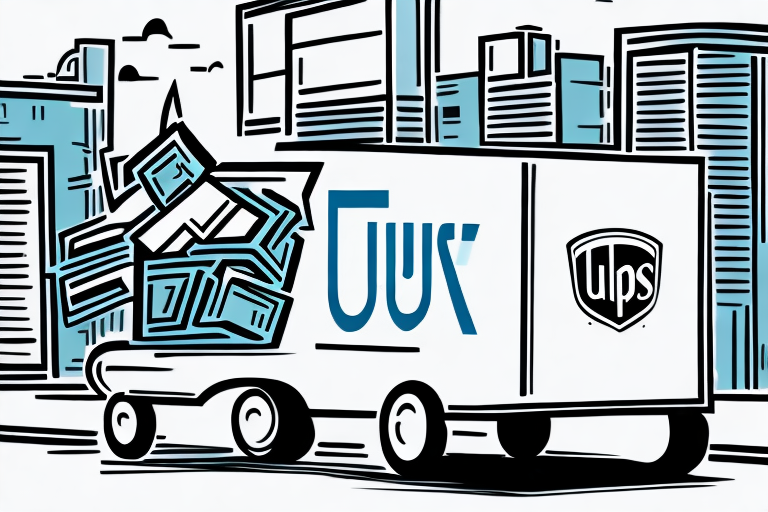How UPS Insurance Works
UPS insurance is designed to protect your package against damage or loss during transit. If a package insured with UPS is damaged or lost, the shipper can file a claim to recover the insured value of the package. The cost of UPS insurance varies based on the package's value and the coverage level selected. It's important to understand that UPS insurance is separate from the carrier's standard liability coverage, which may have its own limits and exclusions.
When shipping valuable items, consider purchasing additional insurance to ensure full protection. UPS offers various insurance options, including:
- Declared Value Coverage: Automatically included in UPS shipments, covering the declared value of the package.
- Third-Party Insurance: Provides additional coverage beyond UPS's declared value, typically at an extra cost.
Choosing the right insurance option depends on the package's value and the level of protection you require. For more detailed information, visit the UPS Insurance Policies.
Calculating the Cost of UPS Insurance
Calculating UPS insurance costs is straightforward. The cost is determined by the declared value of the package and the coverage level chosen. To find the cost per $100, use the following formula:
- Divide the total insurance cost by the declared value of the package.
- Multiply the result by 100.
Example: If insuring a package valued at $500 costs $5, the cost per $100 is $1.
UPS offers different insurance tiers, ranging from $100 up to $50,000. Higher coverage levels may require additional documentation or proof of value. It's also essential to note that UPS insurance covers only the declared value, excluding any sentimental or intrinsic value of the items shipped.
Factors Influencing UPS Insurance Costs
Several factors can affect the cost of UPS insurance, including:
- Package Value: Higher-valued packages incur higher insurance costs.
- Destination: International shipments may have different insurance rates compared to domestic ones.
- Shipment Mode: Air shipments might be more expensive to insure due to higher transit risks compared to ground shipments.
- Package Contents: Items like jewelry or antiques may require special coverage, affecting the insurance cost.
Understanding these factors can help you make informed decisions about the level of insurance needed for each shipment.
Comparing UPS Insurance with Other Carriers
When selecting a shipping carrier, it's beneficial to compare insurance rates and coverage options across different providers to ensure you receive the best value. Here's how UPS stands against some major competitors:
FedEx
FedEx offers similar insurance options to UPS, often with competitive rates for specific package types. Their strong reputation for reliable delivery and efficient claims processing makes them a viable alternative.
United States Postal Service (USPS)
USPS provides unique insurance benefits, such as including up to $50 of insurance coverage at no additional cost with Priority Mail. While their rates may not always be as competitive as UPS or FedEx, their extensive network of post offices can be convenient for many customers.
For a comprehensive comparison of insurance rates and services, consider reviewing the Carrier Comparison Guide.
Tips for Saving on UPS Insurance
Managing shipping costs effectively includes finding ways to reduce insurance expenses without compromising on protection. Here are some strategies:
- Select Appropriate Coverage: Assess the true value of your package and choose a coverage level that matches your needs.
- Increase the Deductible: Opting for a higher deductible can lower insurance costs, though it increases your out-of-pocket expense in case of a claim.
- Optimize Packaging: Proper packaging reduces the risk of damage, potentially lowering insurance premiums and minimizing the need for claims.
- Enroll in UPS Rewards: Joining UPS's rewards program can provide discounts on shipping and insurance for frequent shippers.
Implementing these tips can lead to significant savings, especially for businesses that ship regularly.
Filing Claims and Understanding UPS Insurance Policies
In the event of a lost or damaged package, promptly filing a claim with UPS is crucial. Here's how to navigate the claims process:
Filing a Claim
- Visit the UPS Claims Portal.
- Provide necessary details, including tracking numbers, package value, and evidence such as photos or receipts.
- Submit the claim and monitor its status through UPS's tracking system.
Understanding Policy Details
Before purchasing insurance, thoroughly review UPS's policy terms, including:
- Coverage Limits: Know the maximum coverage provided for different package values.
- Exclusions: Be aware of items or situations not covered by the insurance policy, such as natural disasters or prohibited items.
- Documentation Requirements: Understand what documentation is needed to support a claim effectively.
For detailed policy information, refer to the UPS Insurance Policy Details.
Alternatives to UPS Insurance
While UPS insurance is a reliable option, exploring alternatives can sometimes offer better coverage or cost savings:
- Credit Card Benefits: Some credit cards include shipping insurance as a perk, providing coverage without additional costs.
- Third-Party Insurance Providers: Specialized shipping insurance companies may offer more comprehensive coverage at competitive rates.
- Carrier-Specific Programs: Other carriers like FedEx and USPS have their own insurance offerings that might better suit specific shipping needs.
Evaluate these alternatives to determine the best fit for your shipping requirements.
Best Practices for Insuring High-Value Packages
Shipping high-value items requires additional precautions to ensure their safety and security:
- Choose Higher Coverage Levels: Opt for maximum insurance coverage to protect the full value of your items.
- Enhance Packaging: Use sturdier boxes, ample cushioning, and secure sealing to minimize damage risks.
- Utilize Tracking Services: Monitor your package's journey with UPS's tracking options to stay informed about its status.
- Avoid Peak Shipping Times: Ship valuable items during less busy periods to reduce the risk of theft or mishandling.
Implementing these best practices can significantly enhance the protection of your high-value shipments.
Navigating International Shipping and Customs with UPS Insurance
Shipping internationally introduces additional considerations related to customs regulations and insurance:
- Understand Destination Requirements: Each country has specific import regulations and documentation requirements that must be met.
- Review International Insurance Policies: UPS's insurance terms may differ for international shipments, so it's essential to familiarize yourself with these differences.
- Be Aware of Prohibited Items: Certain items may be restricted or banned in destination countries, affecting insurance coverage.
For more information on international shipping policies, visit the International Shipping with UPS Guide.
In conclusion, understanding the cost and benefits of UPS insurance is vital for safeguarding your packages. By calculating insurance costs accurately, considering various influencing factors, comparing with other carriers, and following best practices, you can ensure your shipments are protected effectively.








